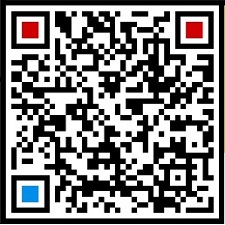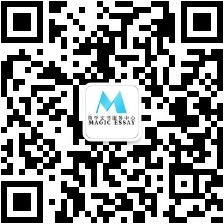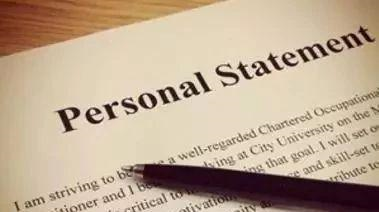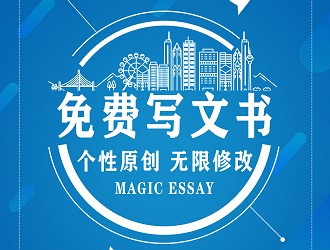留学文书范文|电子通信|个人陈述|PS|Wireless Communication|14
嘉东/2020-01-21/ 分类:个人陈述PS/阅读:
Program: Wireless Communication As a student of information engineering, the last semester of my undergraduate program at the University of xx marked an important period for me. While many of my fellow students had great difficulties in th ...
Program: Wireless Communication
As a student of information engineering, the last semester of my undergraduate program at the University of xx marked an important period for me. While many of my fellow students had great difficulties in their job hunting, I was already recruited by xx Corporation, the largest institution of protocol analysis in China. This was an indication of the industry’s full recognition of my strong ability to apply acquired knowledge to practice, to solve practical problems, and the great potential of research and development as a top-notch communication engineer.
Living up to the high expectations of the top management, I have proved myself a great asset to the corporation. Since the very outset of my employment, I have familiarized myself with the mobile application in the SS7 protocol, part of the UMTS protocol. I participated in the xx of the corporation’s SS7 Multi-slot Test Instrument, involving decoding, analyzing, emulation, optimization, and solution of SS7. My responsibility was the BSSAP in GSM, involving the analysis of A Interface Process, Drop Rate, Channel Congestion, CIC Seizure, Disconnection Cause, Handover, as well as the trace of IMSI. As the chief contact person, I collaborated with xx and provided solution to the wireless network optimization and evaluation by means of our corporation’s protocol decoding of A Interface and Abis Interface as well as GN Nettest’s GSM COMPASS software.
In July, xx was to conduct a nationwide assessment of 3G equipment by all the domestic manufacturers and our corporation’s was responsible for the test of all the sample equipment. I was put in charge of testing Nortel’s content-based fee-counting performance of the GGSN system in the xx Center of xx. My testing covered the number of contexts based on the maximum parallel PDP, the maximum PDP response rate, the average time delay in PDP response, the average time delay in data processing, the maximum data handling capacity. The statistics from my analysis helped Nortel engineers gain a clearer picture of the performance of their GGSN equipment.
My greatest professional achievement came in this September when our corporation dispatched me to xx to work out the call failure problem in the network equipment imported by Bombay VSNL operators from China xx Corporation, China’s largest network equipment supplier for whom our corporation has been providing network optimization solutions. The failure to solve the problem would lead to serious damages of xx’s business reputation in the international market. Together with xx engineers, I made detailed decoding analysis of A Interface and found that an erroneous signaling has been caused in the Information Transfer Capability by the xx manufacturer. As the manufacturer used the a6 and 26 reserved in the standards which failed to conform to the value of 60 (indicating speech), the calls could not be recognized by the MSC system. A patch from xx headquarters easily solved the entire problem and more than 30 xx and xx engineers witnessed how a young network engineer solved a problem that nobody could solve for such a long time. Following this, I flew to xx together with xx engineers where we offered technical training to local MTNL operators on SS7, including TUP, ISUP, INAP, MAP, CAP, and BSSAP. Apart from enhancing my ability to solve challenging problems independently, I improved my ability to use English as a working language.
I am equally proud of my other professional highlights. My in-depth understanding of mobile network qualified me as a technical inspector of the GSM network of the entire xx Province during which I proposed that the call failure rate be calculated by either “Assignment Complete” + “Clear Request” or “Handover Complete” + “Clear Request”. My propositions, duly approved by many specialists, have now been incorporated as a technical standard by China Mobile in network inspection. Apart from that, I have done much technical exchange with xx China Headquarters where I attended high-ranking forums on WCDMA and also shared my experiences and concepts with experts there. In addition, as a delegate of our corporation, I have participated in two conferences held by xx (xx, one of the influential standards organizations in the world) and in several sub-conferences in the xx Group. Apart from keeping myself abreast with the latest communication standards in China and in the world, I also contributed to the perfection of some technical standards. At one of the discussions, the problem of the low BS efficiency was addressed. According to the A.S0013-Av1.0, the MSC pages the BS first and then sends SMS on the common channel or the traffic channel. Yet, when the BS does receive the paging request message, it can not distinguish whether or not to assign the traffic channel, leading to reduced BS efficiency. To change the problem, we proposed the addition of fields in the paging request message to unequivocally indicate that the MSC wants to deliver SMS either on common channel or traffic channel, thus enhancing the BS efficiency. Finally, early in 2005, I will be dispatched by my corporation to xx to undertake on-the-spot development based on the local Celcom operations.
In retrospect, my achievement of so many distinguished professional results should be attributed primarily to the rewarding education I received from xx, arguably one of the most prestigious institutions in the fields of communication and information systems and in signal and signal processing in both China and the entire Asia. Majoring in information engineering, I have studied the subject with great interest and initiative. In attending the course Information Theory, Shannon, with his Shannon Theorem and Shannon Limit, immediately became my idol as he pictured the ultimate direction of communication technology. I have laid a solid theoretical knowledge base by learning a whole spectrum of specialized subjects. My academic performance showed steady and consistent rise over the years. By reading Digital Communications by John G. Proakis, I was exposed to a host of new technologies such as serial and parallel concatenated codes, punctured convolutional codes, turbo TCM and turbo equalization, and spatial multiplexing.
Having mastered C language for programming design, VHDL for hardware design, and MATLAB for simulation, I undertook a design project on GSM TCH/FS Channel Coding in which I completed the whole channel coding for the full rate speech channel TCH/FS in the GSM system under the simulation platform of MATLAB 6.5. My more ambitious design happened in my graduation project Call Admission Control Scheme in Multi-Service CDMA Cellular Systems. My paper analyzed the relationship between the system residual capacity and QoS constraints for a multi-service CDMA cellular system and employed the SIR-measurement-based local and global call admission control schemes for multi-services. In my project, I constructed a model for the system and performed extensive simulation through MATLAB 6.5 and the board of examiners commented on my design as “showing a solid foundation in communication theories and skills, an in-depth understanding of 3G call access control (CAC), with original perspectives on some issues apart from demonstrating abilities in analyzing and solving practical problems.”
Despite all my academic and professional buildup, I have faced major embarrassments. When offering 3G trainings, I was questioned by one client why TURBO, as the FFC code for high rate transmission, has the fastest transmission speed and what is the theoretical basis for this. I could not come up with an adequate answer with so many people present and they were very disappointed. This made me aware of the need to pursue more advanced education—an undergraduate education is simply far from sufficient in this rapidly changing world of communication technology!
To become a truly well-trained communication specialist, I would like to seek a Master of Science Program in Wireless Systems at the Department of Signals, Sensors, and Systems, xx. Located in xx, xx, the country which has produced the world communication giant Ericsson, your Department is most strong in teaching and research at graduate levels. In addition, the xx Center is based in your reputed Department and the professors and lecturers responsible for the courses are all at the forefront of wireless systems development. In my proposed program, I would like to concentrate on any of the following three major fields—Wireless Communications, Information Transmission & Processing, and Networks & Services. I hope to interact fully with my prospective professors, lecturers, classmates from across the world and industrial leaders through coursework, seminars, workshops and internships in local industries. Your program will certainly catalyze on my past academic and professional background to cultivate me into a top-notch engineer in wireless communication.
In my first overseas experience to India, I received my mother’s greetings immediately after getting off the plane at the airport and wireless communication connected us. It is hard to imagine the modern world without wireless communication. While enjoying the conveniences brought by wireless communications myself, as an professional of the communications industry, I am determined to exploit the limits in the existing wireless communication technology and make it better for perfect human interaction.
Living up to the high expectations of the top management, I have proved myself a great asset to the corporation. Since the very outset of my employment, I have familiarized myself with the mobile application in the SS7 protocol, part of the UMTS protocol. I participated in the xx of the corporation’s SS7 Multi-slot Test Instrument, involving decoding, analyzing, emulation, optimization, and solution of SS7. My responsibility was the BSSAP in GSM, involving the analysis of A Interface Process, Drop Rate, Channel Congestion, CIC Seizure, Disconnection Cause, Handover, as well as the trace of IMSI. As the chief contact person, I collaborated with xx and provided solution to the wireless network optimization and evaluation by means of our corporation’s protocol decoding of A Interface and Abis Interface as well as GN Nettest’s GSM COMPASS software.
In July, xx was to conduct a nationwide assessment of 3G equipment by all the domestic manufacturers and our corporation’s was responsible for the test of all the sample equipment. I was put in charge of testing Nortel’s content-based fee-counting performance of the GGSN system in the xx Center of xx. My testing covered the number of contexts based on the maximum parallel PDP, the maximum PDP response rate, the average time delay in PDP response, the average time delay in data processing, the maximum data handling capacity. The statistics from my analysis helped Nortel engineers gain a clearer picture of the performance of their GGSN equipment.
My greatest professional achievement came in this September when our corporation dispatched me to xx to work out the call failure problem in the network equipment imported by Bombay VSNL operators from China xx Corporation, China’s largest network equipment supplier for whom our corporation has been providing network optimization solutions. The failure to solve the problem would lead to serious damages of xx’s business reputation in the international market. Together with xx engineers, I made detailed decoding analysis of A Interface and found that an erroneous signaling has been caused in the Information Transfer Capability by the xx manufacturer. As the manufacturer used the a6 and 26 reserved in the standards which failed to conform to the value of 60 (indicating speech), the calls could not be recognized by the MSC system. A patch from xx headquarters easily solved the entire problem and more than 30 xx and xx engineers witnessed how a young network engineer solved a problem that nobody could solve for such a long time. Following this, I flew to xx together with xx engineers where we offered technical training to local MTNL operators on SS7, including TUP, ISUP, INAP, MAP, CAP, and BSSAP. Apart from enhancing my ability to solve challenging problems independently, I improved my ability to use English as a working language.
I am equally proud of my other professional highlights. My in-depth understanding of mobile network qualified me as a technical inspector of the GSM network of the entire xx Province during which I proposed that the call failure rate be calculated by either “Assignment Complete” + “Clear Request” or “Handover Complete” + “Clear Request”. My propositions, duly approved by many specialists, have now been incorporated as a technical standard by China Mobile in network inspection. Apart from that, I have done much technical exchange with xx China Headquarters where I attended high-ranking forums on WCDMA and also shared my experiences and concepts with experts there. In addition, as a delegate of our corporation, I have participated in two conferences held by xx (xx, one of the influential standards organizations in the world) and in several sub-conferences in the xx Group. Apart from keeping myself abreast with the latest communication standards in China and in the world, I also contributed to the perfection of some technical standards. At one of the discussions, the problem of the low BS efficiency was addressed. According to the A.S0013-Av1.0, the MSC pages the BS first and then sends SMS on the common channel or the traffic channel. Yet, when the BS does receive the paging request message, it can not distinguish whether or not to assign the traffic channel, leading to reduced BS efficiency. To change the problem, we proposed the addition of fields in the paging request message to unequivocally indicate that the MSC wants to deliver SMS either on common channel or traffic channel, thus enhancing the BS efficiency. Finally, early in 2005, I will be dispatched by my corporation to xx to undertake on-the-spot development based on the local Celcom operations.
In retrospect, my achievement of so many distinguished professional results should be attributed primarily to the rewarding education I received from xx, arguably one of the most prestigious institutions in the fields of communication and information systems and in signal and signal processing in both China and the entire Asia. Majoring in information engineering, I have studied the subject with great interest and initiative. In attending the course Information Theory, Shannon, with his Shannon Theorem and Shannon Limit, immediately became my idol as he pictured the ultimate direction of communication technology. I have laid a solid theoretical knowledge base by learning a whole spectrum of specialized subjects. My academic performance showed steady and consistent rise over the years. By reading Digital Communications by John G. Proakis, I was exposed to a host of new technologies such as serial and parallel concatenated codes, punctured convolutional codes, turbo TCM and turbo equalization, and spatial multiplexing.
Having mastered C language for programming design, VHDL for hardware design, and MATLAB for simulation, I undertook a design project on GSM TCH/FS Channel Coding in which I completed the whole channel coding for the full rate speech channel TCH/FS in the GSM system under the simulation platform of MATLAB 6.5. My more ambitious design happened in my graduation project Call Admission Control Scheme in Multi-Service CDMA Cellular Systems. My paper analyzed the relationship between the system residual capacity and QoS constraints for a multi-service CDMA cellular system and employed the SIR-measurement-based local and global call admission control schemes for multi-services. In my project, I constructed a model for the system and performed extensive simulation through MATLAB 6.5 and the board of examiners commented on my design as “showing a solid foundation in communication theories and skills, an in-depth understanding of 3G call access control (CAC), with original perspectives on some issues apart from demonstrating abilities in analyzing and solving practical problems.”
Despite all my academic and professional buildup, I have faced major embarrassments. When offering 3G trainings, I was questioned by one client why TURBO, as the FFC code for high rate transmission, has the fastest transmission speed and what is the theoretical basis for this. I could not come up with an adequate answer with so many people present and they were very disappointed. This made me aware of the need to pursue more advanced education—an undergraduate education is simply far from sufficient in this rapidly changing world of communication technology!
To become a truly well-trained communication specialist, I would like to seek a Master of Science Program in Wireless Systems at the Department of Signals, Sensors, and Systems, xx. Located in xx, xx, the country which has produced the world communication giant Ericsson, your Department is most strong in teaching and research at graduate levels. In addition, the xx Center is based in your reputed Department and the professors and lecturers responsible for the courses are all at the forefront of wireless systems development. In my proposed program, I would like to concentrate on any of the following three major fields—Wireless Communications, Information Transmission & Processing, and Networks & Services. I hope to interact fully with my prospective professors, lecturers, classmates from across the world and industrial leaders through coursework, seminars, workshops and internships in local industries. Your program will certainly catalyze on my past academic and professional background to cultivate me into a top-notch engineer in wireless communication.
In my first overseas experience to India, I received my mother’s greetings immediately after getting off the plane at the airport and wireless communication connected us. It is hard to imagine the modern world without wireless communication. While enjoying the conveniences brought by wireless communications myself, as an professional of the communications industry, I am determined to exploit the limits in the existing wireless communication technology and make it better for perfect human interaction.
此文书内容来源于网络,若侵犯权益,请及时联系我们!
若需要更多的文书范文也请联系我们!
-
VIP咨询

免费申请/获取文书范文加上方微信
-
微信公众号

更多免费申请信息请关注上方公众号
版权声明 本文仅代表作者观点,不代表本站立场。
本文系作者授权本站发表,未经许可,不得转载。
本文系作者授权本站发表,未经许可,不得转载。
扩展阅读:
推荐文章
Recommend article-

艺术设计类-媒体管理-个人陈述范文-1
个人陈述PS/阅读:1042 -

医科-个人陈述范文PS-心理学-14
个人陈述PS/阅读:636 -

留学文书范文|电子工程|个人陈述|PS|Electrical Engineering|14
个人陈述PS/阅读:456 -

留学文书范文|计算机科学|个人陈述|PS|软件工程|11
个人陈述PS/阅读:722 -

留学文书范文|机械工程|个人陈述|PS|Mechanical Engineering|8
个人陈述PS/阅读:422 -

留学文书范文|法学|个人陈述|PS|3|LLM
个人陈述PS/阅读:655
热门文章
HOT NEWS




